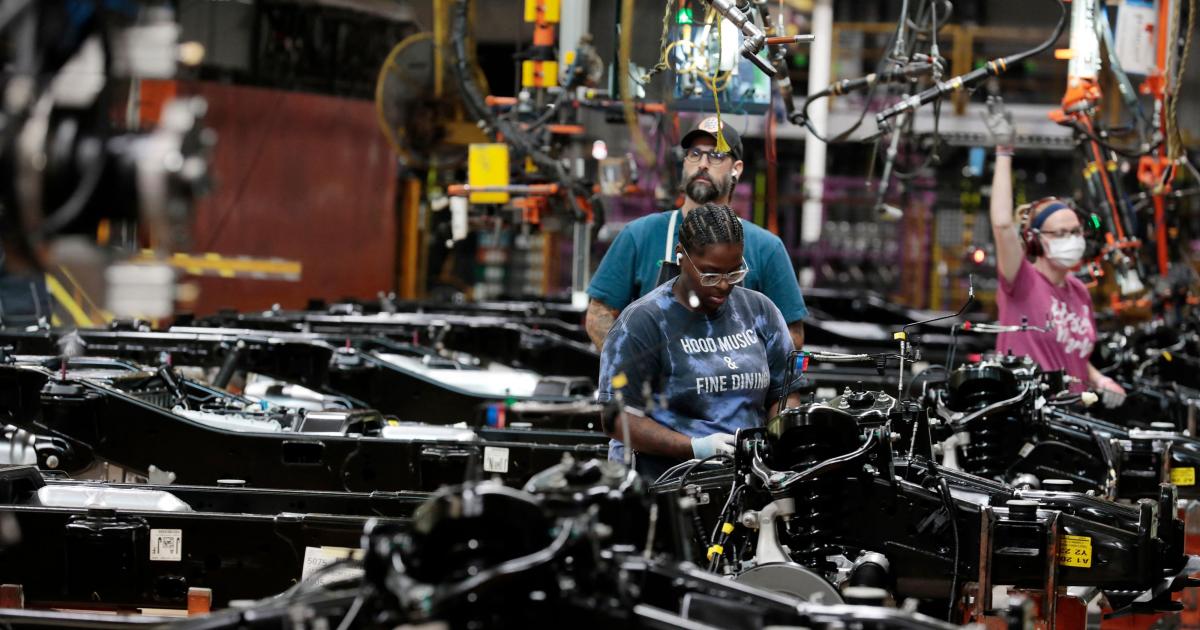Michigan is on the rise once again.
When we think manufacturing, we think Michigan. As one of America’s leading manufacturing states , it stands in the top third for economic outlook among all the United States, and it’s leading America’s industrial renaissance .
Unfortunately, some Michigan lawmakers are pursuing a series of so-called green legislative efforts that will stop the state’s progress square in its tracks.
The leading culprit is House Bill 4759 , which will subject Michigan families and businesses to “a carbon-free energy portfolio of 100%” by 2035, with some minor exclusions. To put it lightly, this would devastate the Michigan economy and provide no environmental benefits .
Let’s first look at the economics.
Michigan gets about 63% of its energy from conventional sources like coal and natural gas ( 33.4% and 29.4% , respectively). 26% comes from nuclear , while wind and solar provide only around 8%.
This means that two-thirds of Michigan’s most affordable electricity will need to be replaced by more expensive and less reliable renewables.
In other words, higher prices and lower reliability for Michigan residential consumers and businesses.
While the pro-renewable community tries to handwave these problems away, there is enough real-world evidence that shows how harmful a forced transition to renewables actually is—especially to manufacturing-heavy economies.
Take Germany, for instance, where the political class is forcing a transition from conventional fuels to less dense energy sources such as wind and solar. Because of that, industry in the country faces a 40% increase in energy prices .
Many will blame this increase on Russian President Vladimir Putin’s invasion of Ukraine, but that’s not the real story.
As an initial matter, the residential retail price for electricity in Germany was already triple that of the U.S. average in 2021. Germany’s reliance on Russia was a result of its push towards renewables (and its shift away from nuclear energy), which left it unable to generate the power it needed to fuel its modern industrial economy. It relied instead on Russian hydrocarbons, and that is what created the vulnerability.
And it’s being felt by German businesses.
The Association of German Chambers of Commerce and Industry recently reported that industry pessimism about the economy is as severe now as it was during the 2008 financial crisis and the initial COVID-19 lockdowns. Seventy-eight percent of businesses surveyed identified rising energy and raw material prices as two of the biggest risks they face, contributing to expectations that their businesses will deteriorate.
Another survey found that nearly 25% of Germany’s small- and medium-sized businesses are considering or actually relocating parts of their operations to other countries. One prominent example is German company BASF’s decision to invest in China rather than Germany (or Michigan).
The great irony of the entire episode is that Putin’s gas and oil, which was backfilling for the deficiency of renewables, is now being backfilled by coal .
There are examples closer to home as well.
Like the Michigan proposal, California has a zero-carbon energy goal, which it plans to reach by 2045. Like Germany, California imports energy to make up for its own policy deficiencies—indeed, California is America’s leading electricity importer. Also, like Germany, electricity prices in California are significantly higher than the U.S. average.
The result is that businesses and industry can’t leave California fast enough.
Why would anyone in Michigan want to replicate what’s happening in California or Germany? And who is going to backfill Michigan’s energy shortfalls?
From the fur trade to lumber to auto manufacturing, Michigan has seen its fair share of booms and busts.
Yet somehow, manufacturing always fights back.
Between 1979, when there were around 1.2 million manufacturing jobs in Michigan, and 1983, the state lost over 300,000 manufacturing jobs . Eventually, manufacturing largely stabilized at between 800,000 and 900,000 jobs during the 1990s and then steadily dropped during the 2000s before bottoming out at 431,000 jobs during the 2009 financial crisis. It then fought its way back to over 600,000 manufacturing jobs when COVID-19 struck (or more accurately, governments struck down our economy with their COVID-19 policies).
Michigan needs to succeed, and removing energy options is the way to failure, not success. If Michigan’s politicians believe so much in renewables, they should prohibit electricity from being imported from neighboring states that use coal or natural gas to produce it.
Perhaps most importantly, how is Michigan’s manufacturing and industrial renaissance going to survive such a policy?
Some might argue that while the costs could be severe, it’s a price worth paying to save the planet. So, let’s now look at the environmental impact.
The Heritage Foundation’s chief statistician, Kevin Dayaratna, has investigated exactly this impact using the same models used by government agencies. He found that eliminating all U.S. greenhouse gas emissions would reduce temperatures by no more than 0.2 degrees Celsius by 2100. (The Daily Signal is the multimedia news and commentary site of The Heritage Foundation.)
If Michigan were to eliminate all of its conventional fuel-based emissions, it would result in the infinitesimal temperature reduction of 0.0042 degrees Celsius by 2100. Michigan needs to ask itself, after all that its industry has been through over the past century, after all the fighting back, as it sits at the precipice of a manufacturing renaissance, is it worth throwing all of that away for 0.0042 degrees over a lifetime?
The answer is no.
Editor’s Note: This article has been corrected to accurately state the bill number.
This article was modified at 7:35 p.m. June 26 to correct the fraction of a degree Celsius that temperatures would be reduced by eliminating greenhouse gas emissions.
This piece originally appeared in The Daily Signal

